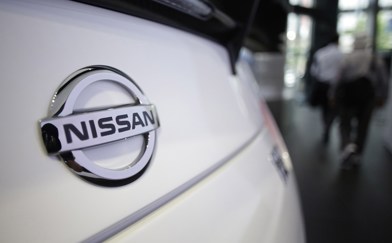Road user charges (RUC) and road funding have been in the headlines recently with the announcement that EVs and PHEVs will be charged RUCs from the 1st of April this year, raising the question for some people of just exactly who pays for our roads and how?
The short answer is "you do", at least in some way if you drive a car or use public transport, or even pay rates and taxes, with at least some funding coming from all those sources. But let's break it down further to see where it all really comes from.
The funding for New Zealand’s roading network is primarily derived from the National Land Transport Fund (NLTF) which consists of income collected from petrol excise duty (PED) that is included in the cost of a litre of petrol, road user charges (RUC) for diesel (and soon electric vehicles), income state highway property disposal and leasing and a portion of registration and licensing fees for all vehicles.
These funds are used to build, maintain, and operate the entire land transport system. Additionally, tolls and public transport fares also contribute to the operation of specific roads and public transport services. By law, NLTF money has to be invested in land transport.
According to the Ministry of Transport, the responsibility for funding and maintaining local roads is shared between the central government, managed by Waka Kotahi NZ Transport Agency (NZTA), and local councils. Councils contribute to their land transport activities through rates and borrowing, known as the 'local share', while the NZTA entirely funds state highways and road policing.
For certain essential projects the government may decide to fund projects directly with additional funds directed through the government's budget processes.
Petrol Excise Duty (PED) and Road User Charges (RUC)
PED is levied on all petrol in New Zealand and is paid by fuel companies directly to the New Zealand Customs Service. This cost is then passed on to consumers when they purchase petrol, compressed natural gas (CNG), or liquefied petroleum gas (LPG).
RUCs apply to vehicles powered by diesel, hydrogen, or biodiesel, or those weighing over 3.5 tonnes.
Owners need to buy a RUC licence based on their vehicle’s RUC weight and vehicle type. These are purchased in 1000km units (or multiples of 1000) on a pre-pay basis for the distance that the vehicle is going to travel. You must buy a new licence before you’ve driven all the distance covered by your current licence.
The rates for PED and RUC are determined by the government.
Electric Vehicles (EVs) and RUC Exemptions
While EVs are technically subject to RUC, both light and heavy EVs are currently exempt. This exemption for light EVs will end on April 1st, but for heavy EVs it will last until the end of December 2025.
The RUC rate for electric vehicles will be $76 per 1000km unit, while PHEVs will be charged $53 per 1000km.An admin fee will also be charged, depending on how you buy your licence - the admin fee for online purchases is $12.44, while purchasing one in person at an agent will cost $13.71.
Licensing and Registration
While licensing fees contribute to the National Land Transport Fund, a significant portion goes to the Accident Compensation Corporation (ACC) to cover personal injuries resulting from motor vehicle accidents, rather than roading.
How is it spent?
The NZTF is distributed through the National Land Transport Programme (NLTP), a three-year programme that sets out how Waka Kotahi NZTA plans to invest the funds.
Regional Land Transport Plans (RLTPs) developed by Regional Transport Committees set out each region’s transport priorities and list the activities and projects local councils have submitted as bids for NLTP funding. This is in addition to the Waka Kotahi Investment Proposal, which includes proposed state highway activities and nationally delivered programmes.
How much is spent?
Before the announcement of RUCs for EVs, the 2021-24 NLTP was forecast to manage and distribute $24.3 billion dollars, an increase of 44% over the 2018-21 programme. This includes $15.6 billion from the NZTF.
The NZTF contribution consists of $6.7 billion from PED, $6 billion from RUCs and $690 million from registration and licence fees, as well as a $260 million surplus from the 2018-21 programme, a Crown top-up of $830 million for rail network investment and a $2 billion Crown loan for “debt financing”.
The remaining funds managed by the NLTP come from local rates ($4.8 billion), taxpayer-funded public transport subsidies for the SuperGold card ($90 million), and around $3 billion from various Crown funding programmes and loans.
What is it spent on?
According to the NZTA website, the funds will be spent as follows:
- Road, walking and cycling network operations and maintenance – $7.2 billion
- Local, regional and state highway road improvements – $6.6 billion
- Road to Zero safety improvements – $3 billion
- Public transport services – $2.6 billion
- Public transport infrastructure – $2.3 billion
- Rail improvements – $1.3 billion
- Walking and cycling improvements – $1 billion
- Miscellaneous (includes coastal shipping and long-term planning) – $450 million




